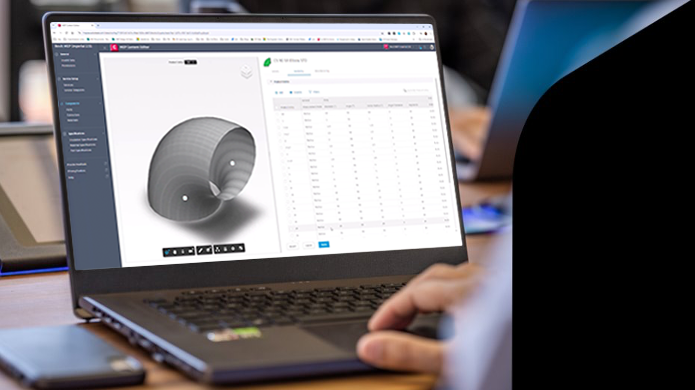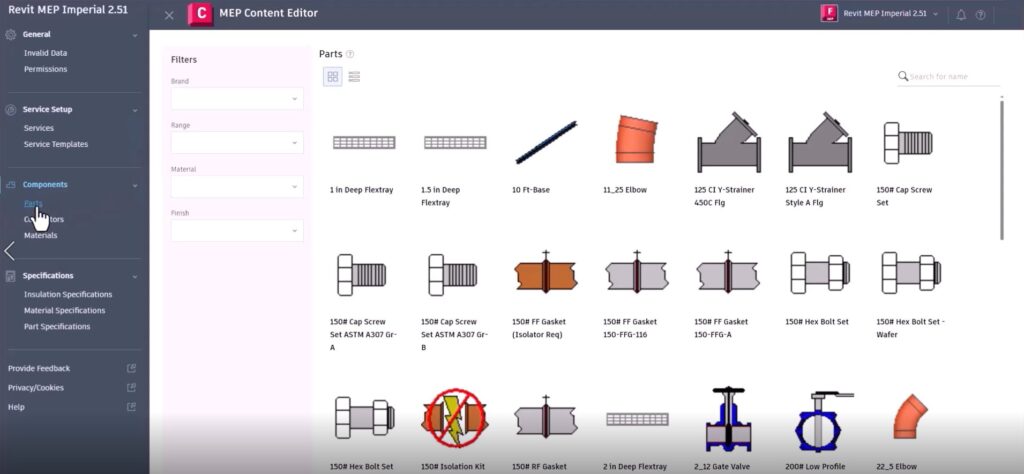
We are pleased to announce the initial launch of our content editing and management web application for detailed MEP content. Originally announced as the “Fabrication Data Manager” here, this transitions the state of the offering from “Tech Preview” to general release. Renamed as MEP Content Editor, this is an entitlement now available to all users of Revit, whether that is a standalone subscription, in a collection, or through consumption models like Autodesk Flex. This capability is supported in Revit 2022-2025.
Supporting Autodesk’s broader mission to deliver Design and Make technology, our vision for MEP is to help the industry deliver higher performing, more sustainable MEP systems with integrated design analysis, coordination and documentation, detailing, and fabrication.
The launch of this service is aligned with other data-related initiatives such as enabling connected workflows via Revit cloud worksharing and newer releases, including the AEC Data Model API which delivers open data access without the need for proprietary tools and the release of Content Catalog to support cross-project workflows and data management.
This initial launch provides a modern, cloud-connected experience to edit, manage, and distribute content for users who desire to model detailed piping in Revit using Fabrication Parts.
“Customizing the Fabrication configuration with the MEP Content Editor is incredibly simple. The modern interface is fantastic, and the strong data integration gives me confidence to make edits effortlessly…Sharing configurations across users anywhere in the world is intuitive, seamless, and efficient. It’s a huge step above any current capabilities.”
– Dave Mangham, DaveM AEC Consulting
Design to Fabrication Integration Strategy
Within Revit, there are very separate and distinct concepts of ‘Design’ and ‘Fabrication’ parts that have different data, visibility, and behaviors. One of the central goals of our overall strategy is to harmonize these distinct types of components and reduce the barriers to better and faster flow of information between all stakeholders. This initial launch of MEP Content Editor is a big step in this direction. Through MEP Content Editor we are modernizing the experience to make utilizing the fabrication parts more approachable by a broader set of users so they may take advantage of the capabilities that these components provide in Revit-based workflows.
Design parts, particularly segments and fittings (Pipe, Pipe Fittings, Pipe Accessories, Duct, Duct Fittings, Duct Accessories) were intentionally developed as very generic elements with generic connectivity, routing capabilities, and limited control over sizes. While users and 3rd parties have created additional capabilities on top of them, they lack certain foundational, real-world behaviors and data, which presents certain challenges such as intelligent connectivity, accurate weight computation, manufacturing details, association to catalog data to constrain available sizes, angles, and other characteristics.

The Fabrication components (MEP Fabrication Pipework and MEP Fabrication Ductwork) provide capabilities that enable additional detail with standardized functionality. Although they are named “Fabrication”, their representation and associated data may be simplified to represent generic components, while maintaining additional capabilities sought after by those wanting to model in Revit with elevated capabilities. Typical requests fulfilled through fabrication parts include, but are not limited to:
- Better control of what fittings, accessories, and components are used for a given service
- Better control of what angles of fittings, such as elbows, are available for a given component
- Intelligent connectivity (such as flanges, welds, and other mechanical joints)
- Specifying insulation requirements in the service definition
The fabrication elements provide more comprehensive design to make options. Revit 2024 and 2025 added flow and pressure drop data on fabrication elements, with more improvements on the roadmap. The MEP Content Editor is a piece of the overall experience intended to enable a broader set of users to benefit from their capabilities, supporting the drive for design to manufacturing and assembly to increase efficient end-to-end workflows assisting with tight project timeframes in the modern age.
“Designing to actual parts is critical to saving time for many projects. Perhaps it’s an existing building with very tight space constraints, or maybe it’s a job that has been poorly engineered and calculations need to be performed late in the project during fabrication. The ability to work with accurate part data for the entire process from design through fabrication is extraordinarily helpful in delivering building mechanical systems on time, and on budget.”
– Jeremy Boyce, Design Department Manager, Kennedy Mechanical Contractors
Please refer to the MEP portion of the Revit Public Roadmap for additional information, including plans to support ductwork and cost data.
Learn more
Below are resources with additional details on using fabrication parts and MEP Content Editor.
An Introduction to Fabrication Data Manager (Autodesk University 2023)
- Learn about uploading local databases to Fabrication Data Manager.
- Learn about reviewing and modifying database content in Fabrication Data Manager.
- Learn how to create new content in Fabrication Data Manager.
- Learn about deploying databases from Fabrication Data Manager.
MEP Content Editor (Formerly Fabrication Data Manager) – Fundamentals (Autodesk University 2024)
- Learn how to create new services, parts, connectors, and materials—and consume the new data in a Revit authoring environment.
- Learn how to navigate around the Fabrication Data Manager UI.
- Learn how to create new services, parts, connectors, and materials—and consume the new data in a Revit authoring environment.
Beyond Fabrication: Using Revit Fabrication Parts for Spec-Driven Design (Autodesk University 2023)
- Discover the benefits of spec-based piping design.
- Learn about assessing the differences between and characteristics of Revit families and Revit Fabrication Parts.
- Learn how to evaluate quality and efficiency gains on projects using Revit Fabrication Parts.
- Learn about challenges encountered during implementation of Revit Fabrication Parts at SSOE.
- Release Notes
- Troubleshooting
- User’s Guide